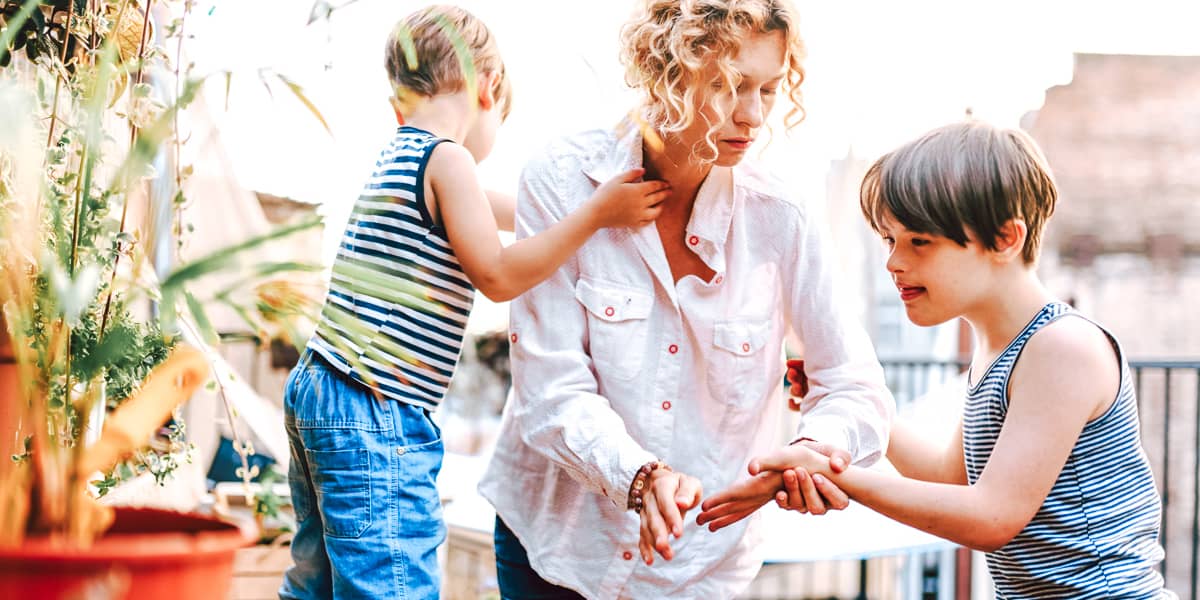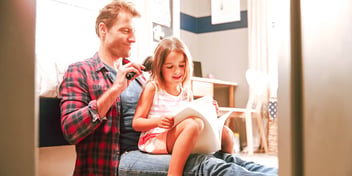What’s the Difference Between Single Parenting and Dual Parenting?

- What a dual-parent household looks like
- What a single-parent household looks like
- What’s best for kids?
- Solid parenting can bridge the gap
- Get help
- References
If you’re a parent who is getting divorced, or even just thinking about it, the impact of your divorce on your kids’ lives has surely crossed your mind.
If you’ve done much research on the impact of divorce on children, you may have come across the terms “dual parenting” and “single parenting.” We’re going to take a look at what these two terms mean.
What a dual-parent household looks like
A dual-parent household is often referred to as a nuclear family. This term describes a family structure that consists of two parents living with their children.
Shared responsibilities
A key characteristic of a dual-parent household is shared responsibilities. Two heads, four hands, and a mutual commitment to sharing the job of raising the kids. With two people dividing the labor, the load can be lighter for each parent. For example, one parent might be in charge of transportation while the other prepares the meals.
Supporting each other
It’s not just about sharing tasks in this type of family structure, either. It's also about being there for each other as parents and partners. The dual-parent dynamic allows for moral support, collaborative decision-making, and the shared highs and lows of raising children.
Dual parenting may sound great, but it certainly has its difficulties. It’s not a perfect setup. (What is?) Still, the framework of a two-parent household allows responsibilities and experiences to be shared, creating a distinct family rhythm.
What a single-parent household looks like
Transitioning from a dual-parent household to a single-parent one is a seismic shift. It's like going from a duet to a solo performance overnight: You're suddenly the only one on stage, and all eyes are on you.
Multiple roles for one parent
In a single-parent household, you take on the role of both parents. You are the caretaker, provider, disciplinarian, teacher, and confidante, all rolled into one. The responsibilities that would be divided in a dual-parent household are solely on you.
If you’re new to single parenting, this can be daunting. But it's also an opportunity to discover your capacity for resilience and resourcefulness.
Financial stress
Financial responsibilities weigh heavier in a single-parent household. You're the sole breadwinner, responsible for providing for your children’s needs, from school fees to doctor's appointments. This can be a significant strain, especially if you're adjusting to a reduced income post-divorce.
Time constraints
The demands on your energy and time are also greater. There are only 24 hours in a day, and they're filled with work, chores, school runs, homework help, meal preparations, and more. Amid all this, you must also provide emotional support for your child. That’s a significant job in itself, and even more so if the kids are adjusting to a parental divorce.
Is a dual-parent household better for the kids?
If you’re wrestling with the question of whether a dual-parent household is better for your children, remember that every family and situation is unique. The answer isn't as straightforward as it might seem.
The assumption that a dual-parent household is inherently superior stems from the belief that having two parents equates to double the love, care, and resources. This can be true if the parents are happy and harmonious. A peaceful, loving environment nurtures a child's well-being regardless of the number of parents present.
But what if the parents are unhappy? An environment teeming with tension, high conflict, and unhappiness can have a detrimental impact on a child's emotional health, even if both parents are physically present.
A single parent who is emotionally available, attentive, and loving can provide a healthier environment for a child than a two-parent household fraught with stress and strife.
Solid co-parenting strategies
Co-parenting isn't about recreating the nuclear family; it's about creating a new family dynamic where children feel secure, loved, and at ease.
Quality co-parenting is possible in divorced families. It’s not always easy, but it can be done. It requires both parents to put the kids’ needs first, setting aside differences for their benefit. It involves consistent communication, mutual respect, and a shared commitment to providing a balanced upbringing.
Children benefit from seeing their parents work together in harmony. It gives them a sense of stability and continuity, reducing the stress of divorce. And let's not forget the benefits for you, the parent. Sharing responsibilities, decisions, and triumphs can lighten your load and enrich your parenting journey.
When done right, co-parenting can offer children the benefits of dual parenting, even when parents live separately.
How Hello Divorce can help
Co-parenting isn't easy, but it's worth the effort. At Hello Divorce, we’ve curated some helpful resources for divorced parents who want to do co-parenting right. We invite you to check out the following resources:
- 5 Useful Co-Parenting Plan Resources
- Guide to Successful Co-Parenting after Divorce
- Worksheet: Create Your Co-Parenting Plan
- 10 Things Parents Forget to Include In Their Co-Parenting Plans
- 5 Ways to Ease the Transition into Co-Parenting
Schedule a free 15-minute phone call with us if you would like to learn more about the plans and services we offer.
FAQs
What is the difference between single parenting and dual parenting?
Single parenting is when one parent takes primary responsibility for raising the child, while dual parenting involves both parents actively sharing responsibilities, often in separate households after divorce.
What are the challenges of single parenting?
Single parents may face increased financial strain, time pressures, and emotional stress from managing household and parenting responsibilities alone.
What are the benefits of dual parenting?
Dual parenting provides children with access to both parents, shared financial responsibility, and balanced emotional support.
Can single parenting still provide a stable environment?
Yes. With consistency, structure, and support networks, single parents can provide children with love, stability, and security.
How do courts view single vs. dual parenting?
Courts generally prioritize arrangements that serve the child’s best interests, whether through sole custody, joint custody, or shared parenting time.
What should parents consider when deciding on a parenting arrangement?
Parents should consider the child’s age, needs, school schedule, and each parent’s ability to provide care, stability, and financial support.
Step-by-Step: Weighing Single Parenting vs. Dual Parenting
Assess your parenting capacity
Evaluate your time, financial resources, and support systems to see if single parenting is sustainable.
Evaluate your co-parenting potential
Consider whether both parents can communicate effectively and cooperate in a dual parenting arrangement.
Consider the child’s best interests
Factor in stability, consistency, and emotional security when weighing single vs. dual parenting.
Plan for financial responsibilities
Understand how child support, shared expenses, and household costs will be handled under each arrangement.
Seek outside guidance if needed
Work with a mediator, therapist, or attorney to create a parenting plan that works best for your family.
References
Are both parents always better than one? Parental Conflict and Young Adult Well-being. Social Science Research.Patterns of coparenting and young children's social–emotional adjustment in low-income families. (February 2023.) Society for Research in Child Development.


